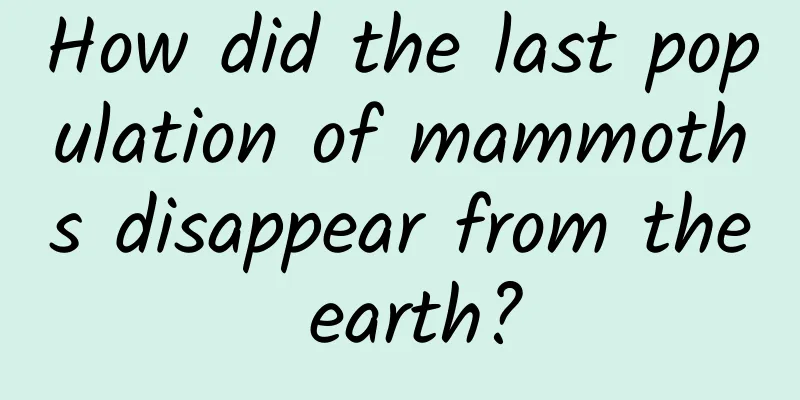How to create highly sticky products? Use these 3 models!

|
What is CLV? Those who make products must understand this word. CLV is customer lifetime value, also known as customer life cycle value, which is the abbreviation of Customer Lifetime Value. It means the total value that a user can create for you in his lifetime. In simple terms, it means: Making money from users is not that impressive; It is considered amazing if you can make money from the same user for a lifetime. This is CLV, customer lifetime value. (Of course, CLV also includes the indirect value that users create for you.) Once you understand CLV, you will know how important user retention rate is. If users leave as soon as they come, what’s the point of talking about lifetime value? Therefore, we can't help but think about a question: What kind of product can achieve a higher user retention rate? Today, I’m here to talk to you about this. one, There is a very high level of product development : making the product a habit for users. When a product enters the user's "habit zone", it gains sustained vitality and there is no need to worry about user retention rate . WeChat has done this. Last year, WeChat released a "2017 WeChat Data Report ", which showed that WeChat had 900 million daily active users in September 2017, and WeChat users sent 38 billion messages per day, a year-on-year increase of 25%. Nowadays, WeChat has become a habit for users. How can we make a product become a habit for users like WeChat? I found an answer from behavioral science. Cognitive psychologists believe that habit is actually a kind of "unconscious behavior produced by situational cues." This sentence gave me a guess: scene + suggestion = habit formation? In order to verify the correctness of this conjecture, I spent hundreds of hours reading a large amount of domestic and foreign information. This is especially true in the field of behavioral psychology, which studies the scientific secrets behind human behavior. And I highly recommend that everyone learn some behavioral psychology. Because this way you can better understand user psychology. In future articles, I will talk to you about this topic frequently. So, let’s return to the topic of product habits. How can we make products become users’ habits? I recommend 3 models to you. two, The first model: Fogg Behavior Model (also known as FBM model) The model is named after behavioral scientist BJ Fogg, founder of the Stanford Behavioral Design Lab. The first step in shaping user usage habits is to get users moving. How to drive user behavior ? Fogg believes that there are three driving factors behind all human behavior, and these three factors are indispensable to get people to take action. This is the FBM model: Behavior = Motivation + Ability + Trigger. There are three necessary conditions for an action to occur:
How to understand this model? Let’s take a look at Fogg’s story. Imagine a scenario: Your cell phone rang, but you didn't answer it. Why? 1. Maybe your phone is in your bag and you couldn’t find it for a while. At this time, you are unable to answer the phone, which hinders your actions. In other words, your abilities are limited. 2. Maybe you thought the other party was a telemarketer and didn’t want to answer the call. Lack of motivation causes you to ignore the calls. 3. It is also possible that the call is very important and you can reach your phone, but the ringtone is set to silent. At this point, even if you have a strong motivation and can easily answer the call, you still don’t answer it because you don’t hear the phone ringing at all. This means that the trigger did not occur. Therefore, if we want users to take certain actions, we need to consider designing three action elements in the product: Give users a reasonable motivation, reduce users' ability barriers, and set effective triggers. This is the core mechanism of Fogg's behavior model. The above is the first model for building product habits: Fogg Behavior Model - If you want users to develop habits, you must first make them change their behavior. three, The second model: the Hook Model. The originator of the addiction model is Nir Eyal, who wrote a book, the Chinese version of which is "Addicted: Four Major Product Logics that Help Users Develop Habits". In the addiction model, Nir divides the process of building habits into four stages: trigger, action, variable rewards, and investment.
Through the user's "investment", the next "trigger" may be generated, thus starting a positive cycle, and then you become addicted. This is Nir's addiction model. Based on Fogg's behavioral model, he added more addictive elements to form a positive cycle, allowing the product to guide users to repeat the behavior and eventually form a habit. The above is the second model for building product habits: the addiction model - the cultivation of habits is to let users' behaviors cycle and repeat continuously. Four, The third model: the gamification octagon model. Why are games so addictive? This shows that there must be many addictive elements behind the game design. Game design attaches great importance to human behavioral motivations. It is a people-centered design rather than a function-centered design. So, from the perspective of gamification, I found a good model - the gamification octagon model. The author is gamification expert Yu-kai Chou. He spent ten years studying games and eventually found that the reasons why people love playing games are basically inseparable from eight core driving forces: 1) Epic significance and calling. The player thinks he is doing something bigger than himself, or that he is being “chosen” to do something. 2) Development and achievement. The design focuses on creating "challenges" that players develop skills and eventually overcome. 3) Enhance creativity and feedback. This forces users to figure things out and try different combinations repeatedly during the creation process. 4) Ownership and property. When a player feels ownership, he naturally wants to make things better and more his own. 5) Social impact and relevance. This drive integrates all the social elements that drive people, including: guidance, acceptance, social responsiveness, companionship, as well as competition and jealousy. 6) Lack and impatience. It’s the drive to want something because you can’t have it. 7) Unpredictability and curiosity. If you don’t know what’s going to happen, your brain gets involved and you think about it a lot. 8) Loss and avoidance. This core drive is based on avoiding negative events that would cause them to lose money if they don’t take immediate action. These eight core driving forces constitute the gamification design framework. Because it is designed in an octagonal shape and each side represents 1 core driver, this model is called the "Octagonal Model". The above is the third model for building product habits: the gamification octagonal model - insight into core driving forces and enhancing the intrinsic appeal of products. five, Talent belongs to a few, but routines belong to everyone. ——Kangxi's Master Finally, let’s summarize all the content of today: 1) What is CLV? CLV stands for customer lifetime value, which refers to the total value that a user can create for you in his or her lifetime. If you understand CLV, you will know the importance of user retention rate. 2) What kind of product can achieve a higher user retention rate? There is a very high level of product development: making the product a habit for users. 3) How to make the product become a habit for users? I recommend three models to you:
six, Three things you can do today. Today we are talking about models that trigger actions, so let’s put them into practice and practice them deliberately. Here are three things you can do today: First thing: search. Find out what elements are already used in your own products. The second thing: think. Think about which model is more suitable for your product. The third thing: design. Imagine if you were to redesign your product, how would you do it? Author: , authorized to be published by Qinggua Media . Source: |
<<: Bud parenting class: 10 abilities to let children take control of their lives
>>: How can products improve user stickiness? Here are 3 tips
Recommend
What are open links and black links? Things to note when buying open links and black links!
The day before yesterday, when I was chatting wit...
I already have lung cancer. Is it meaningless to quit smoking? The truth is...
Recently, the topic #刘谦患pulmonary adenocarcinoma#...
What exactly is the "Pink Muhly Grass" that is popular on the Internet?
Audit expert: Shi Jun Doctor of Botany, well-know...
How much useless work have people done to prevent their myopia from getting worse?
Eyes are the windows to the soul. Once you are ne...
Dyeing the lake pink! It’s for science…丨Environmental Trumpet
Hello everyone, this is the 18th issue of the Env...
How to plan an event? Activity planning process conception
1. Principles of activity task allocation 1) Spec...
The latest news on the epidemic in Wuxi, Jiangsu in 2022: What is the risk level? Attached is the latest prevention and control policy!
According to the current epidemic situation, Wuxi...
Creative inventory of 7 major mainstream industries, all cases of information flow CTR8% are here!
I guess many optimizers have suffered from creati...
How SEO Got My App 150,000 Downloads
After reading this article, I have a question: th...
Electric Technology Auto News: Compared with the rise of SUVs, domestically produced sedans have stagnated. Can the Roewe i6 break the dilemma?
It is an indisputable fact that Chinese brands ar...
Can drinking a cup of honey water every day really improve your skin and relieve constipation? Don’t worry, here’s the truth!
In daily life, we often hear various tips for kee...
Some methods and techniques for choosing 400 telephone service
No matter what we do, if we find certain methods ...
Why do more people with lung cancer get worse in winter? How can lung cancer patients spend the winter safely? Pay attention to these 6 details
Winter is the most difficult season for lung canc...
Attracting 42 million fans in 6 years, "MINISO"'s private domain skills!
Last October, it was directly listed on the New Y...
Xiaomi's car-making partner confirmed? SAIC-GM-Wuling officially confirms
It is reported that the official account of SAIC ...









